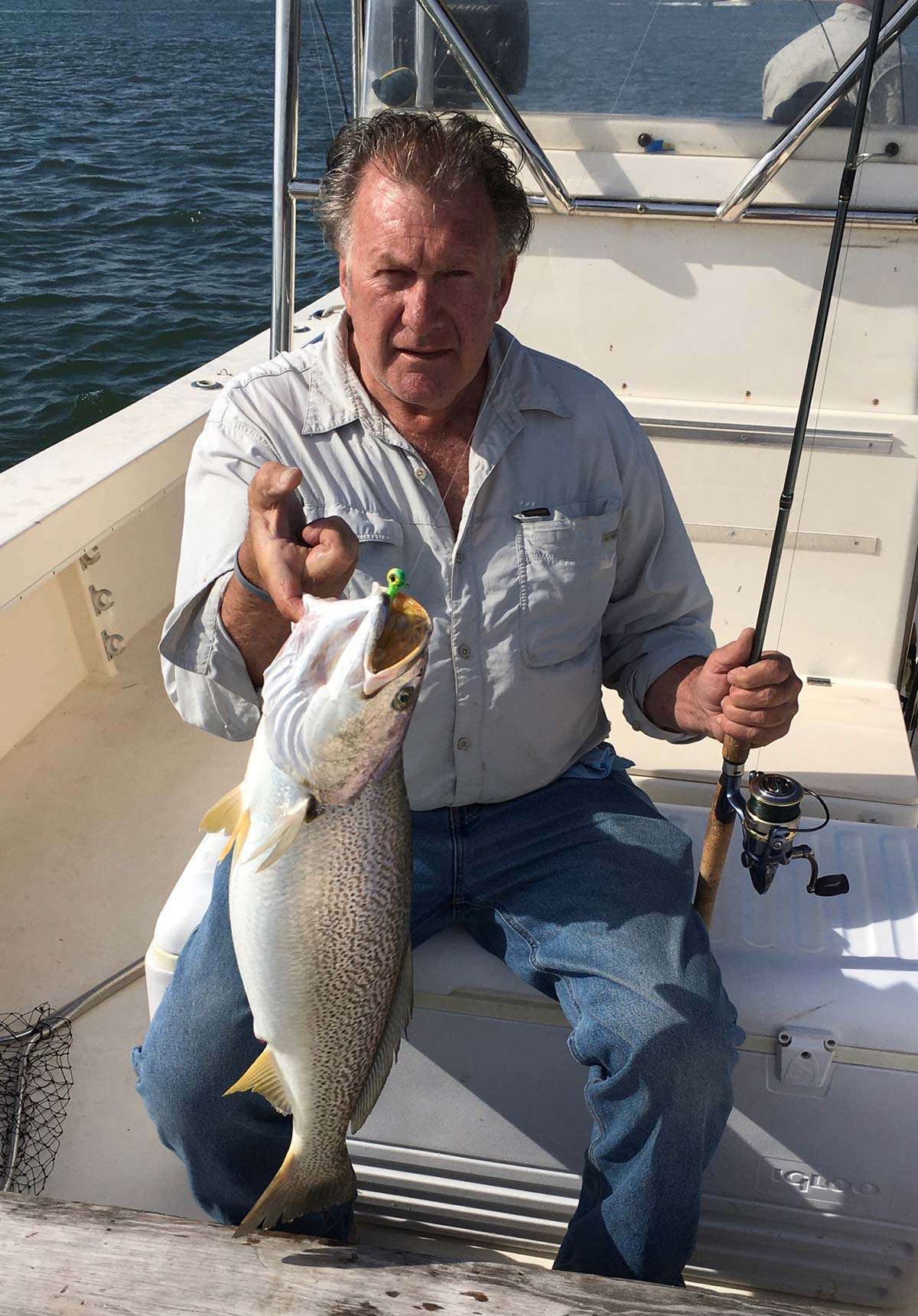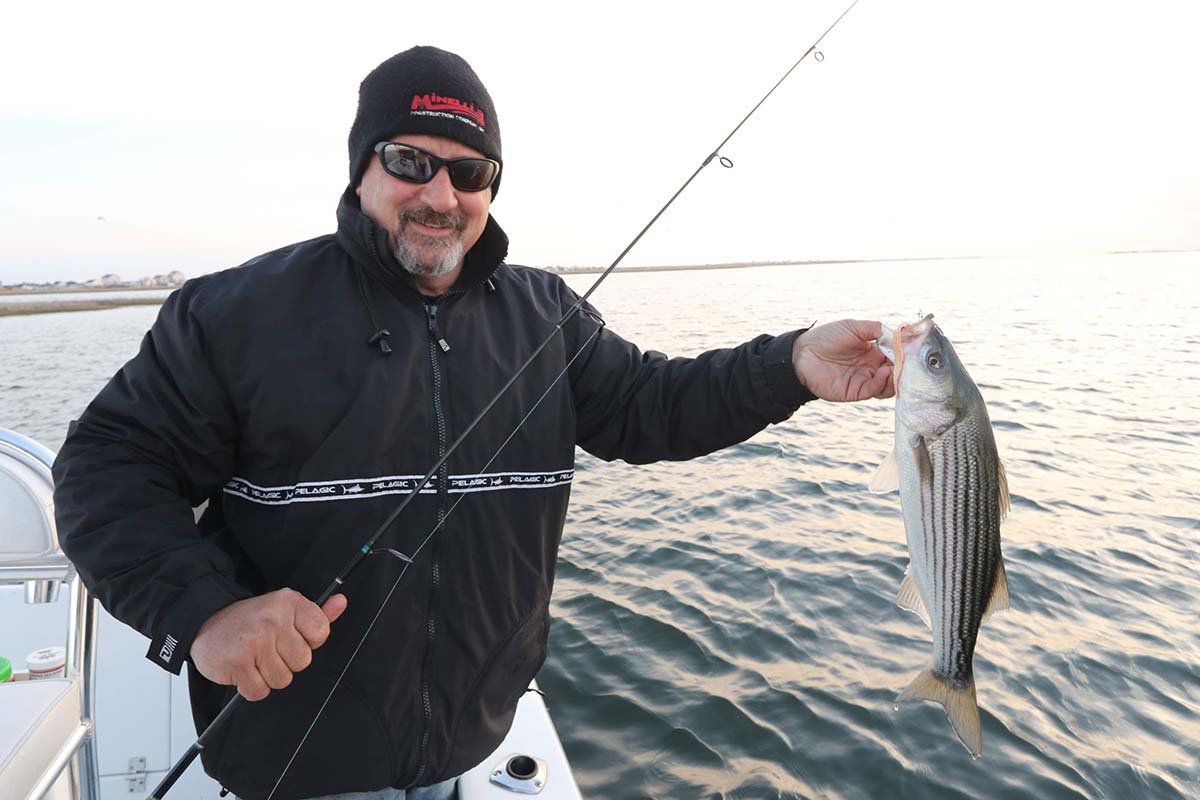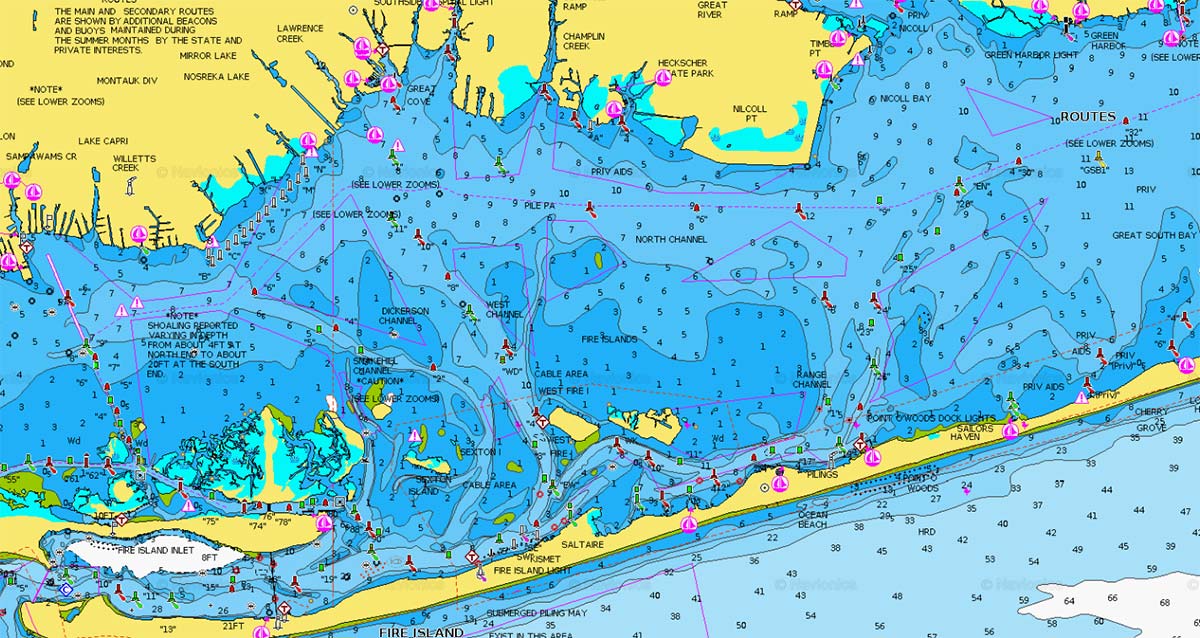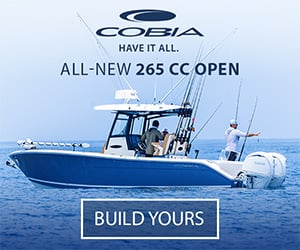
The largest of the South Shore bays offers light tackle anglers a wide variety of options during May and June.
Every year I look forward to May as the official start to my fishing season. Yes – there are hold-over stripers, white perch and trout to play with in March and April, and there are usually a few party boats probing ocean wrecks for cod, ling, porgies and maybe some tog. Once the fifth month rolls around however, several of our most popular inshore species become prime targets for anglers working the relatively calm confines of Great South Bay. Striped bass, bluefish, weakfish and fluke can all provide very good and consistent action once the calendar strikes May, and good fishing can usually be counted on through June.
The nicest part of this early season action is that fishing for all four of these species can be accomplished with light tackle, and with a little bit of pre-trip planning, it’s possible to score all four species in a single outing. Fishing in your own boat or a friend’s gives you the flexibility to accomplish this, but for those hopping aboard an open boat, especially those sailing evening trips, it is not out of the question to run into a mix of these species.
For private boat anglers, the opportunities are virtually unlimited. Schools of blues, many of them in the 2 to 5-pound range, along with a mix of “racers” in the double-digit category, find their way into our bays most seasons. Racers are those long, lean choppers that arrive after completing their annual inshore migration from offshore waters. Birds working over fish are a sure giveaway to their presence, although large numbers of schoolie stripers that have been residing in the bay in recent years improve the odds of finding stripers, rather than blues causing the commotion. The abundance of school size stripers, here and along much of the Striper Coast, is the result of several good Chesapeake Bay and Hudson River year classes since 2011, and they are an ideal target for light tackle anglers. If you do come upon fish feeding on the surface, don’t go racing into the middle of the action or you will spoil the fishing for other anglers as well as yourself. Bass and blues will spook easily in the relatively shallow waters of the bay. Approach the action slowly from the upcurrent or upwind side of the school so that your drift puts you into the action.
Working birds are not the only clue to the presence of blues, bass and in some cases, weakfish. Sometimes even one or two birds circling and picking over an area can reveal the presence of feeding fish. Slicks are another excellent clue that there might be gamefish feeding on baitfish below the surface, especially if the slick is accompanied by a strong odor, which we refer to as a ripe slick. Anytime you come across those calm, oily patches of water, they are worth investigating. Schools of bunker can also generate a slick, but where there are bunker, there is also the chance of finding some fish hanging with them. Work the slick with bucktails or leadheads tipped with soft plastics down deep and there is the potential to come up with any one of the big three.

You can catch plenty of bass and blues without the assistance of birds or slicks. Good electronics are a must for locating bait and fish, and staying on top of the fish, especially when fishing some of the deeper areas of the bay. Working around various forms of structure is also key and it comes in many forms – from flats, drop-offs and rips, to manmade structure like bridges. Areas always worth investigating during this time of year include the shallows north and south of Dickerson Channel, the Bay Shore Flats, the flats in the southeast and southwest corners of the Captree (bay) Bridge, and the shallows north of Sexton Island. Also worth a try are Snakehill Channel, Heckscher flats, the flats surrounding East Island and the bars that border the channel entrances to Kismet and Fair Harbor. Further east, the shallows along the Fire Island side of the barrier beach from Fire Island Pines to Watch Hill and beyond offer good opportunities for blind casting. Along the mainland side, the points, coves and creek mouths from Bayport through Bellport have produced good action for bass and blues in recent years. To the west, the State Boat Channel and its maze of marshes and drains is a fishery within itself and well suited for light tackle. From Captree to Tobay, its coves are a haven for baitfish, as are the many drains that intersect the marshes. Work the mouths of these drains where they empty into the channel and the fringes of the coves. All of the above are areas where blind casting with topwater plugs, especially during the early morning hours, can produce both blues and bass.
For shore bound anglers in May and into June, the mainland creeks and marina docks from Massapequa to Bellport have the potential to surrender weakfish, stripers, blues and fluke. Some years, the fishing can be fairly consistent. Weakfish are never a given as they seem to show up in years you least expect them, but they have been trending toward abundance the past few seasons. When they do show, if tiderunners are among them, these creeks do yield some big yellowfins as they satisfy their craving for grass and sand shrimp which are plentiful in these waters. I’ve caught them up to 14 pounds from local docks, and have had numerous 10 to 12 pounders over the years, but your shot at a big tiderunner diminishes as the month of May progresses and the larger fish vacate the creeks for the open bay. Big weaks like to prowl dock lights so nighttime is the right time if you’re looking for a big yellowfin.
Holdover school stripers have been providing action as early as February in recent years but May has seen some quality bass fall to those who opt to chunk from bayside docks like Bay Shore Marina, West Sayville and Patchogue, but certainly not limited to those spots. The presence of bait is the key to good action along the mainland shore and that has not been an issue of late, given the recent abundance of bunker, both adult and peanuts. The bunker have also drawn bluefish within range of mainland anglers and they can range anywhere from 2 to 12 pounds. On the other side of the bay, the shorelines adjacent to the Captree Drawbridge and the Robert Moses (inlet) Bridge are good bets for bass and blues in the spring, as is the backside shoreline of Robert Moses State Park, east and west of the bridge.
As the month progresses, especially weakfish, seem to show a preference for the deeper channels on the south side of the bay running along Point O’ Woods, Ocean Beach and west to the Fire Island Lighthouse, along with West Channel. These areas will also hold fish early in the month, but they also draw a crowd, especially the Ocean Beach grounds. With other options earlier in the month, I prefer to avoid the crowds and the boat traffic, which includes a never ending parade of Fire Island ferries. If you plan on targeting these areas, try to fish them very early or late to avoid the boat traffic which will put weaks and bass off their feed.
Fluke season opens May 4th and the first couple of weeks of the season can be quite good. Last spring saw most of the Captree fleet congregating in the State Boat Channel, but the edges of the bars and rips north of the Fire Island Coast Guard Station (the old Yellow Bar), the Robert Moses Bridge, inside the Oak Beach Bar, the Kismet Drain, Ocean Beach and West Channel are always worth some effort. Looking to see where the Captree open boat fleet is concentrated will give you a pretty good clue as to where the biggest concentration of flatties has been in recent days. If you like to cast for fluke, bucktails or leadheads dressed with scent infused plastics like Gulp, Fishbites and Z-Man’s Doormatadorz will keep you in the action.
For those of you with no access to a boat, I’ve discovered a rather unique fluke fishery the past couple of seasons. While we have always picked a fluke here and there off of the bay’s mainland docks and piers, I’ve been amazed at the quality of the fishing the last two years. The key to the fishing has been working a ½-ounce leadhead fitted with a Fishbites Dirty Boxer curly tail grub tight along the bulkhead. I simply strip out about eight feet of line and bounce the jig while slowly walking along the dock. When there is room, I’ll cast next to and parallel to the dock. The technique has worked on docks from Massapequa to East Moriches on fish to 5 pounds, along with a fair number of smaller keepers. The fluke are apparently feeding on the grass and sand shrimp that cling to these structures. Those fish I have cleaned have been stuffed with the tiny shrimp.

As I noted at the start, light tackle is the way to go in May. Medium/light action spinning rods from six to seven feet, depending on your preference and the ability to avoid T-Tops while casting, matched to 2500 or 3000 series reels are ideal for fishing the bay. Spool up with 10-pound braid and top it off with four feet of 20-pound fluorocarbon leader joined by a double-uni, modified Albright or FG knot, and you’re set to go. At the terminal end, I prefer to tie direct to bucktails and leadheads, but you can go to a snap for metals and plugs. For light tackle fishing, I still prefer Duo-Lock snaps for their lower profile, over the bulkier yet stronger quick clips.
Your spring arsenal can be kept pretty basic. Bucktails are a must and can range anywhere from 5/16 of an ounce to 1-ounce. A good selection of jig heads in the same weight range should also be in your box. For fishing the mainland creeks, keep in mind that downsizing your offerings is usually the better choice, while fishing deeper water with current, you will want to lean toward the upper end. Even in deep water with strong current, you should never have to exceed an ounce if you angle your casts in the direction of your drift, which will keep your offering down near the bottom in the feeding zone.
There are a lot of choices when it comes to poppers and pencil poppers, including those from Super Strike, Yo-Zuri, Tsunami, Cotton Cordell, Ocean Born, Tidewater Smack-It, Guides Choice and Tactical Anglers. Another really good topwater option are spook-style or walk the dog type plugs. Getting away from the light tackle theme for a minute, there are some situations where tossing larger plugs can be beneficial. A heavier action 7 or 8-footer and 4500 or 5000 size reel spooled with 20-pound braid will allow you to target big bass and blues with plugs like large metal-lip swimmers weighing 2 to 3 ounces or the Lil’ Doc (spook style) which weighs in at 2-3/4 ounces.
A couple of metals such as a 007 Diamond Jig with a tube and a Kastmaster type of “tin” from ¾ to 1.5 ounces, and a good selection of soft plastics should cover most of the bases you’re likely to encounter. Jelly worms, grub tails, swim shads and Bass Assassins will catch their share of weakfish, stripers and fluke, and all three species are out and out suckers for a wide assortment of scent infused baits, including those mentioned earlier.
Break out the light tackle and take advantage of the many opportunities that Great South Bay has to offer during May and June. And if you play your cards right, you just might score a grand slam with four of our favorite inshore species.



